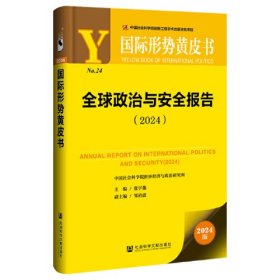
社会语言学教程(新)
¥ 18.24 4.8折 ¥ 37.9 九品
仅1件
北京昌平
认证卖家担保交易快速发货售后保障
作者[英]赫德森 著
出版社外语教学与研究出版社
出版时间2000-08
版次1
装帧平装
货号A3
上书时间2024-11-28
- 在售商品 暂无
- 平均发货时间 16小时
- 好评率 暂无
- 最新上架
商品详情
- 品相描述:九品
图书标准信息
- 作者 [英]赫德森 著
- 出版社 外语教学与研究出版社
- 出版时间 2000-08
- 版次 1
- ISBN 9787560020075
- 定价 37.90元
- 装帧 平装
- 开本 16开
- 纸张 胶版纸
- 页数 284页
- 正文语种 英语
- 丛书 当代国外语言学与应用语言学文库
- 【内容简介】
-
《社会语言学教程》所阐述的都是有关社会语言学的基本题目,也是学习语言学的学生或对社会语言学感兴趣的人们必须了解的一般知识。与同类书的不同之处在于《社会语言学教程》的题目更概括,更理论化,更具启发性。作者时时处处都会把社会语言学的观点、看法和研究成果与理论语言学的传统联系起来,提出批评或表达自己的新看法,从这个角度来看,它不仅是语言学专业的学生必读的教科书,而且也是语言学的研究人员不可或缺的参考文献。
《社会语言学教程》的第二个特点是,作者把社会语言学这门新兴学科与其他相关学科的关系在序论一章中讲解得十分明晰和透彻。社会语言学是一门边缘学科,涉及语言学、社会学、社会心理学、人类学、交际学等人文学科,不把这些关系弄清楚,初学者不仅理不出一个头绪来,而且不知道从何处入手,具备哪些必要的知识和技能才能从事该领域中相关题目的研究。
该书不仅反映了社会语言学的最基本的观点,而且把该领域中一些最新的研究成果和观点包括了进去。作者在第二版的前言中说,修订版中有三分之一的内容是新的。书中一些改变出于各种考虑。首先作者自己的观点发生了变化,读者可以在第七章“理论概括”中看到有关改变观点的解释。其次作者认为自20世纪80年代初到90年代中期,社会语言学又有了新的发展和变化。
第四个特点书中自始至终贯穿着一种批评精神。作者是一个理论语言学家,精通语言结构的理论和研究方法,但对社会语言学的观点绝为因循守旧,排斥“异端”;相反,他却毫不顾忌地对传统语言学的一些观点进行了批评,而且他认为,在理论语言学这个研究领域里的确的值得批评的地方。第五个特点是作者受社会语言学的启示,看到理论语言学研究中的一些不足,试图把社会语言学的知识与语言结构的理论联系起来,建立一种新的理论框架。 - 【目录】
-
PrefacebyHalliday
王宗炎序
导读
Prefacetothesecondedition
Prefacetothefirstedition
1Introduction
1.1Sociolinguistics
1.1.1Adescription
1.1.2Sociolinguisticsandlinguistics
1.1.3Sociolinguisticsandthesociologyoflanguage
1.2Soeiolinguisticphenomena
1.2.1Animaginaryworm
1.2.2Arealbutexoticworld
1.2.3Arealandfamiliarworm
1.3Speakersandcommunities
1.3.1Conformityandindividualism
1.3.2Thesociolinguisticdevelopmentofthechild
1.4Summaryandconclusions
2Varietiesoflanguage
2.1Introduction
2.1.1Globalandspecificstatements
2.1.2Linguisticitems
2.1.3Varietiesoflanguage
2.1.4Speechcommunities
2.2Languages
2.2.1Languageanddialect
2.2.2Standardlanguages
2.2.3Thedelimitationoflanguages
2.2.4Thefamilytreemodel
2.3Dialects
2.3.1Regionaldialectsandisoglosses
2.3.2Diffusionandthewavetheory
2.3.3Socialdialects
2.3.4Typesoflinguisticitem
2.4Registers
2.4.1Registersanddialects
2.4.2Diglossia
2.5Mixtureofvarieties
2.5.1Code-switching
2.5.2Code-mixing
2.5.3Borrowing
2.5.4Pidgins
2.5.5Creoles
2.6Conclusions
3Language,cultureandthought
3.1Introduction
3.1.1Culture
3.1.2Thought
3.1.3Language,cultureandthought
3.2Linguisticandculturalrelativity
3.2.1Semanticrelativity
3.2.2Prototypes
3.2.3Basic-levelconcepts
3.2.4Conclusions
3.3Languageandthought
3.3.1Languageandsocialisation
3.3.2TheSapir-Whorfhypothesis
3.3.3Sexisminthelanguagesystem
3.4Generalconclusions
4Speechassocialinteraction
4.1Thesocialnatureofspeech
4.1.1Introduction
4.1.2Theclassificationofspeech
4.1.3Speechasskilledwork
4.1.4Thenormsgoverningspeech
4.1.5Conclusion
4.2Speechasasignalofsocialidentity
4.2.1Non-relationalsocialcategories
4.2.2Powerandsolidarity
4.2.3Linguisticsignalsofpowerandsolidarity
4.3Thestructureofspeech
4.3.1Entriesandexits
4.3.2Otherkindsofstructureinspeech
4.4Verbalandnon-verbalbehaviour
4.4.1Relation-markers
4.4.2Structure-markers
4.4.3Content-markers
4.5Male/femaledifferencesinspeech
5Thequantitativestudyofspeech
5.1Introduction
5.1.1Thescopeofquantitativestudiesofspeech
5.1.2Whystudyspeechquantitatively?
5.2Methodology
5.2.1Problemsofmethodology
5.2.2Anexample:NewYork
5.2.3Anexample:Norwich
5.2.4Anexample:Belfast
5.2.5Anexample:Cardiff
5.2.6Anexample:Detroit
5.3Linguisticvariables
5.3.1Typesofvariable
5.3.2Calculatingscoresfortexts
5.3.3Calculatingscoresforindividualsandgroups
5.4Influencesonlinguisticvariables
5.4.1Linguisticcontext
5.4.2Thespeakersgroupmembership
5.4.3Thespeaker"sdegreeofgroupmembership
5.4.4Thespeaker`ssex
5.4.5Thesituationandstyle
5.5Summary
6Linguisticandsocialinequafity
6.1Linguisticinequality
6.1.1Introduction
6.1.2Threetypesoflinguisticinequality
6.2Subjectiveinequality
6.2.1Language-basedprejudice
6.2.2Evaluationoflanguage
6.2.3Stereotypesandhowtostudythem
6.2.4Prejudiceofteachers
6.2.5Prejudiceofpupils
6.3Linguisticincompetence:strictlylinguisticinequality
6.4Communicativeincompetence:inequalityincommunication
7Theoreticalsummary
7.1Introduction
7.2Thesocialfunctionsoflanguage
7.2.1Face
7.2.2Solidarityandaccommodation
7.2.3Networksandmultiplemodels
7.2.4Socialtypesandaetsofidentity
7.2.5Power
7.2.6Analoguerelationshipsandvariability
7.3Thestructureoflanguage
7.3.1Background
7.3.2Thehistoryoftheisolationoflanguage
7.3.3Evidenceagainsttheisolationoflanguage
7.3.4Twofurthersourcesofvariability
7.3.5Implicationsfortheoriesoflanguagestructure
Bibliography
Index
文库索引
点击展开
点击收起
— 没有更多了 —












以下为对购买帮助不大的评价